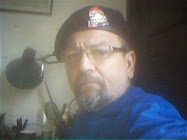Saturday, June 12, 2010
Neda Soltan and the power of human rights video
A year ago this weekend, Tehran erupted in protest at the disputed results of Iran's tenth presidential election. In the severe government crackdown that followed, documented on cameras and uploaded by citizens to YouTube, no moment has been seen more than the death of Neda Agha Soltan, a young musician whose brutal killing by a sniper became the rallying cry for Iran's opposition Green Movement. The anonymous videos of her death even won a prestigious George Polk award for journalism last year.
Today on the YouTube homepage, we're featuring a documentary from director Antony Thomas and HBO, entitled "For Neda". The film highlights how citizen reporting has become so important to human rights that even world leaders are paying attention to it. For example, as you'll see in "For Neda," President Obama talks about watching the video of Neda's death, calling it "heartbreaking" and "unjust."We're also taking this opportunity to begin a series of blog posts in partnership with WITNESS, an international human rights organization that supports people using video to document and expose human rights violations, to explore these issues.How has video become such an important part of human rights advocacy worldwide? At its heart, human rights video is about making something visible that was not visible before. Seeing human rights abuses with our own eyes is very different than reading about the same abuses in a story or a blog post or a Tweet. In the past, we mainly saw these kinds of images in the nightly news or in documentaries -- and even then only occasionally. But now that camera usage and access to the Internet is much more widespread (including in many developing countries), we encounter human rights images much more directly. For example, Burma, TibetIran are places where it's difficult for local or international media to report, so when mass protests were met with violent force, it falls on ordinary people to try to get images out.
Human rights video is about more than capturing images of abuse as they happen, however. Direct testimony from victims or local activists can provide powerful and compelling evidence of human rights violations. Testimonies like that of "Mary," a Zimbabwean political activist who was abducted, raped and beaten in a secret torture center after the disputed 2008 presidential elections in Zimbabwe, have unique power to help us see what those who have suffered human rights abuses see, to feel what they feel, and to hear what they want to happen.
Videos alone aren't usually enough; in order to make an impact, activists organize around the content. Sometimes organization is required simply to ensure the content finds an audience: in Iran, it was a networked web of activists who organized proxy servers and emailed footage to a diaspora outside of the country to ensure the videos got around the government's block of YouTube. Other times, coordinated campaigns ensure that citizens are called to action in courts, public squares or parliaments, as has happened in Brazil, Kenya, India or in the International Criminal Court. This isn't a phenomenon confined to developing countries or repressive regimes; it's also happening in the U.S. Testimony as part of a campaign against elder abuse across the U.S. has helped expose stories that would otherwise go untold, and to pass legislation that improves the lives of millions of citizens. In our next post, we'll talk more specifically about what you can do to make sure videos you've uploaded or care about can have maximum impact for human rights.
As online spaces become more and more important for sharing and accessing information, we believe that access to the Internet itself is becoming a key factor in human rights in the 21st century. To make that a reality, governments, businesses, activists and citizens need to take a collective stand to ensure that video can shine a light into the darkest corners of human society, providing paths to justice to those who need it most. Both at WITNESS and at YouTube we're committed to helping build a global movement for human rights video that does just that.
ALWAYS ON TOP ( Scroll down for recent postings )
===
PAM ! Pam-para,pam-pam !
PAM ! PAM !
Jun 12, 2010
Subscribe to:
Post Comments (Atom)






 ..Israeli Shekel Exchange
..Israeli Shekel Exchange
No comments:
Post a Comment